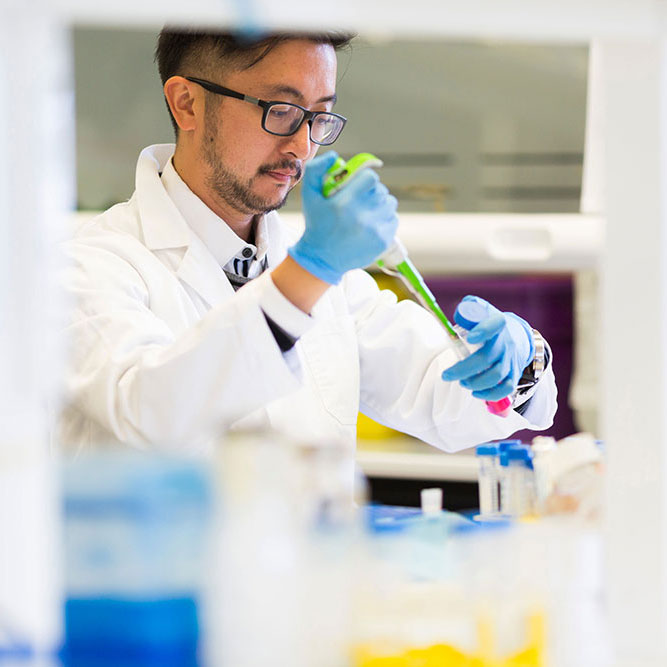This website uses cookies so that we can provide you with the best user experience possible. Cookie information is stored in your browser and performs functions such as recognising you when you return to our website and helping our team to understand which sections of the website you find most interesting and useful.
News
Unearthing answers to AMD’s genetic code
Australian researchers have identified the role two key genes associated with age-related macular degeneration play in the disease.
The team, led by CERA’s Principal Investigator of Cellular Reprogramming Associate Professor Raymond Wong, have for the first time found that the genes TMEM97 and POLDIP2 play a role in regulating oxidative stress – a part of ageing in the macula.
The findings, published in Aging and the International Journal of Molecular Science, provide a deeper understanding of the underlying causes of AMD and help prioritise new gene targets for treatments.
The research is a collaboration between CERA, the University of Melbourne, Lions Eye Institute and other national collaborators.
Gene targets
AMD is one of the world’s leading causes of blindness, yet we still don’t understand all the mechanisms that lead to this disease.
It affects the macula – the central part of the retina at the back of the eye – causing cells to gradually break down, often leading to blurred central vision.
Identifying and understanding the genes associated with a higher risk of developing AMD can help researchers develop treatments that target the underlying causes of the disease.
Previous studies have identified many genes that are linked to AMD, though Associate Professor Wong’s team are the first to investigate the roles of two specific genes, TMEM97 and POLDIP2, in human retinal pigmented epithelial cells (RPE) – the cells affected in AMD.
To determine the genes’ function, the team created a model of human RPE cells in the lab. Then, using cutting-edge gene editing technology, Associate Professor Wong and his team ‘switched off’ the two genes and discovered it had a key role in maintaining cell health.
Genes provide the instructions for many biological processes in our cells. By turning off certain genes in cells, researchers can study its effect and see what role these genes play.

Oxidative stress
“It turns out both of these genes play roles in regulating the oxidative stresses, which is a key mechanism in ageing of the retina,” Associate Professor Wong says.
Oxidative stress is a natural process in our bodies that can happen when our cells use energy.
“As you get older, there’s a build-up of oxidative stress in cells, which affects many cell types including RPE,” says Associate Professor Wong.
“Generally, high oxidative stress is bad for cells – and could contribute to RPE degeneration.”
These findings have opened the door for further research into the genetic causes of AMD, as well as the potential for developing future AMD treatments targeting the genes regulating cell degeneration.
“These findings improve our understanding of the genes that contribute to higher risk of AMD and how the disease develops,” says Associate Professor Wong
“Future studies could target these genes to develop AMD treatments.”
Read the research
Nguyen, T., Urrutia-Cabrera, D., Wang, L., et al. Knockout of AMD-associated gene POLDIP2 reduces mitochondrial superoxide in human retinal pigment epithelial cells. Aging (2023). https://doi.org/10.18632/aging.204522
Wang, JH., Urrutia-Cabrera, D., Jarmon, GL., et al. Development of a CRISPRi Human Retinal Pigmented Epithelium Model for Functional Study of Age-Related Macular Degeneration Genes. International Journal of Molecular Sciences (2023). https://doi.org/10.3390/ijms24043417
This study received joint funding from CERA and the University of Melbourne.

